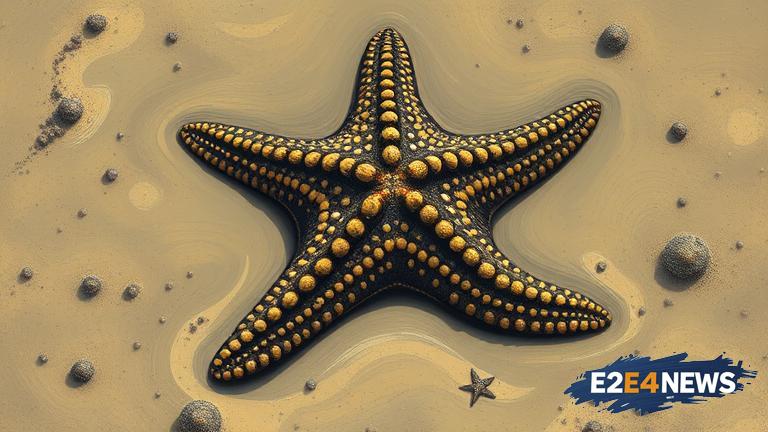Sea star wasting disease, also known as starfish wasting disease, has been wreaking havoc on ocean ecosystems along the West Coast of North America. The disease, which was first reported in 2013, has been responsible for the deaths of millions of starfish, also known as sea stars. The disease causes the starfish to undergo a rapid decline, characterized by lesions, loss of arms, and eventually, death. Scientists have been working tirelessly to understand the cause of the disease, but so far, no definitive answer has been found. The disease has been identified in over 20 species of starfish, and has been reported in numerous locations, including California, Oregon, Washington, and British Columbia. The impact of the disease on the ecosystem has been significant, with many species that rely on starfish as a food source being affected. Sea otters, for example, rely heavily on starfish as a primary food source, and the decline of starfish populations has had a ripple effect throughout the ecosystem. The disease has also had a significant impact on the commercial fishing industry, with many fisheries relying on starfish as a key component of their operations. Despite the significant impact of the disease, scientists are still unsure of what is causing it. Some researchers believe that the disease may be linked to climate change, while others think it may be the result of a viral or bacterial infection. Further research is needed to determine the cause of the disease and to develop effective strategies for mitigating its impact. In the meantime, conservation efforts are underway to protect remaining starfish populations and to restore damaged ecosystems. The National Oceanic and Atmospheric Administration (NOAA) has been working with other agencies and organizations to monitor the spread of the disease and to develop strategies for managing its impact. The disease has also sparked a renewed interest in the importance of ocean conservation and the need to protect marine ecosystems. As researchers continue to study the disease, they are also working to develop new technologies and strategies for monitoring and managing marine ecosystems. The use of drones, for example, has been explored as a potential tool for monitoring starfish populations and tracking the spread of the disease. Additionally, scientists are working to develop new methods for culturing starfish in captivity, which could potentially be used to replenish depleted populations. The disease has also highlighted the importance of international cooperation in addressing global environmental issues. Researchers from around the world are working together to share information and develop strategies for managing the disease. The impact of the disease on the ecosystem has been significant, and it will likely take years, if not decades, for the ecosystem to recover. However, with continued research and conservation efforts, it is possible to mitigate the impact of the disease and to protect the long-term health of ocean ecosystems. The disease has also sparked a renewed interest in the importance of citizen science and the role that individuals can play in supporting conservation efforts. Many organizations are working with volunteers to monitor starfish populations and track the spread of the disease. By working together, it is possible to make a positive impact and to protect the health of our oceans. The disease is a reminder of the importance of protecting marine ecosystems and the need to take action to address global environmental issues. It is a complex problem that will require a sustained effort to solve, but with continued research and conservation efforts, it is possible to make a positive impact and to protect the long-term health of our oceans.
